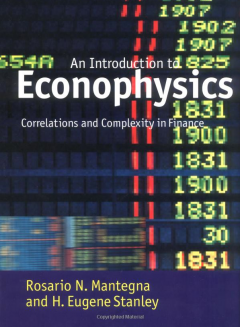
Econophysics is the application of ideas from statistical mechanics to the financial markets. Markets are complex self-adapting systems that are observed to undergo sudden transitions such as “booms” or “bubbles” and “busts” or “crashes”. Transitions in system dynamics are associated with the nucleation and growth of fluctuations, together with a threshold in the state space of the system. Markets are also observed to obey scaling dynamics, an interesting example being the existence of the Pareto distribution of wealth among populations. We will discuss the dynamics of markets from a physics and systems perspective. We will discuss the statistical distributions of returns, the phase dynamics of prices, and models for the markets. We will discuss specific markets such as the equity stock markets (NYSE/Euronext, NASDAQ), the fixed income (bond) markets (Government and Municipals), and the commodities markets (CME and Futures). We will discuss time-dependent models for equity valuations such as the Black-Scholes equation that are used in options pricing.

From Dave Lutz's column:
CORRELATION JUMP- The three-month correlation of stocks in the S&P 500 index has now rocketed from a low of 9 per cent in January to 52 per cent — the largest and fastest change on record aside from the turmoil triggered by the Black Monday crash of 1987, according to FT

Wall Street Journal: So-called net margin debt was worth 1.31% of the total value of the New York Stock Exchange last year, according to Goldman Sachs data stretching back to 1980, eclipsing the previous peak of 1.27% reached in the buildup to the tech bubble in 2000.

"If bitcoin is indeed a cryptocurrency bubble, it's already much larger than the Nasdaq in the late 1990s, the Dow in the roaring 1920s, and silver in the late 1970s.
Birinyi Associates studied bitcoin versus 10 large financial bubbles. Bitcoin showed particular bubble-like qualities this week, surging past $11,000 before trading back at about $9,600 Thursday afternoon. It started November at about $6,500."
https://www.cnbc.com/2017/11/30/bitcoin-dwarfing-some-of-the-…
more…
"For practitioners of Schadenfreude, seeing high-profile investors losing their shirts is always amusing.
But for the true connoisseur, the finest expression of the art comes when a high-profile investor identifies a bubble, perhaps even makes money out of it, exits in time – and then gets sucked back in only to lose everything in the resultant bust.
An early example is the case of Sir Isaac Newton and the South Sea Company, which was established in the early 18th Century and granted a monopoly on trade in the South Seas in exchange for assuming England’s war debt.
…more…There is no content in this space.




